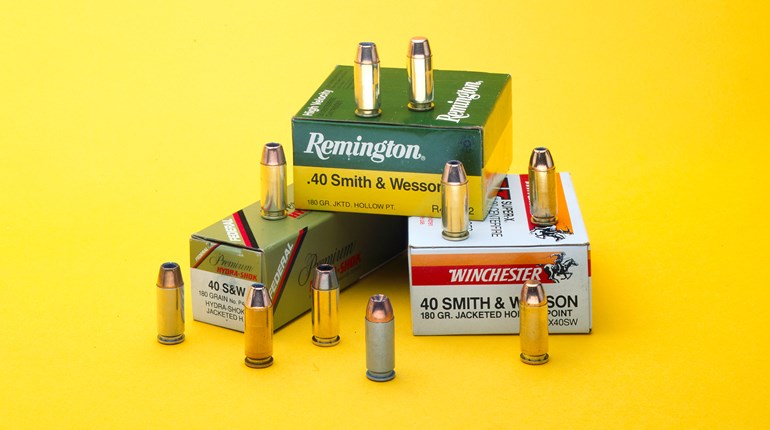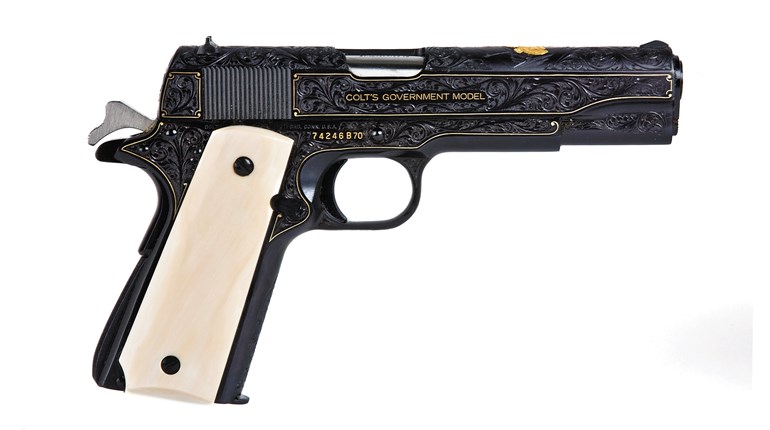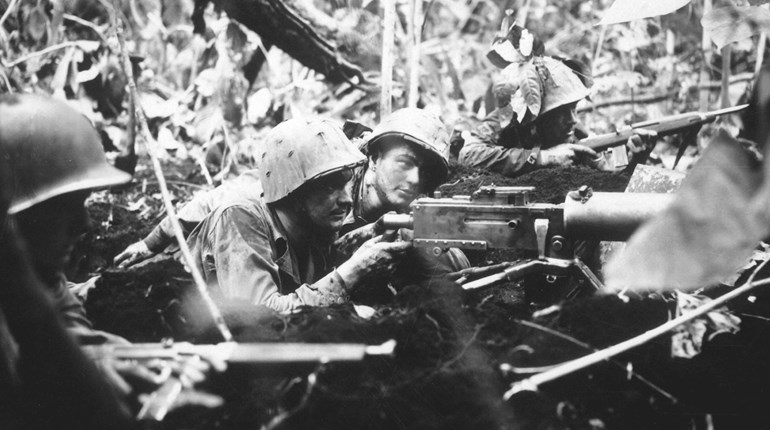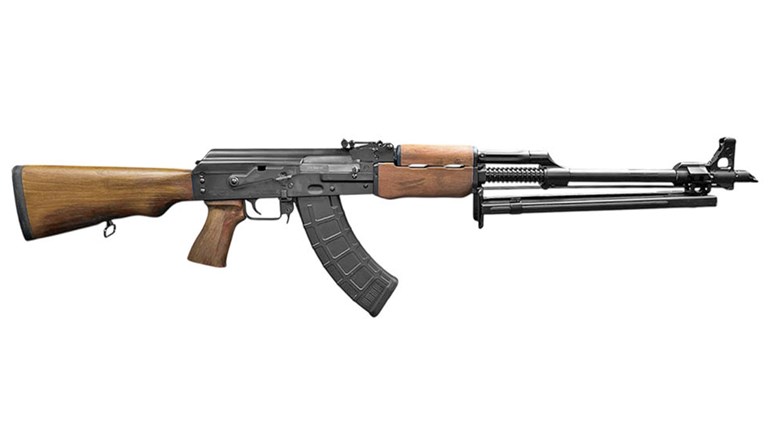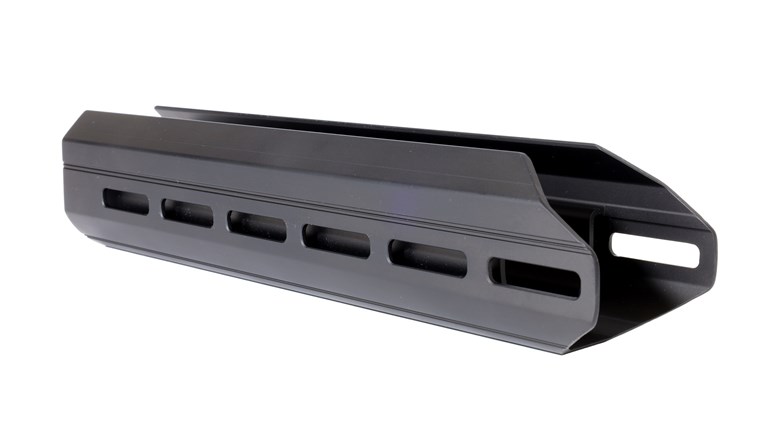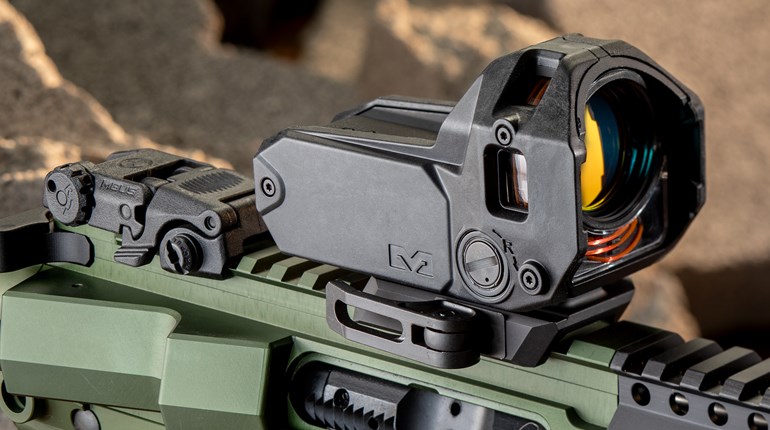
This article, "ASP," appeared originally as a Fightin' Iron column in the April 2017 issue of Shooting Illustrated. To subscribe to the magazine, visit the NRA membership page here and select Shooting Illustrated as your member magazine.
Unique in appearance and design, the ASP pistol was an innovative attempt to develop a compact sidearm for deep concealment and close-quarters combat. As to where the name comes from, supposedly, the despondent Empress of Egypt, one Cleopatra by name, clutched an asp to her bosom and thereby ended her life. If this is true, it’s the waste of a perfectly good bosom, as the asp is a small, but lethally venomous snake. But since this all happened centuries past, we really don’t know all of the real history of the incident. Such is also the case with a modern semi-automatic pistol, the ASP 9mm pistol, which may or may not have been clutched to somebody’s bosom at some point in the gun’s unusual history.
Surrounded by mystery, the ASP pistol is a late-20th century, concealed-carry 9mm pistol, custom-built in New York City in the late 1960s and ’70s. While the aforementioned conundrum may never be unraveled, there are numerous examples of the enigmatic ASP pistol in the hands of students of handgun history and guys who need a slick little carry gun. I once had an example of an ASP for Shooting Review and found it to be a very interesting little sidearm. We need to start with an understanding of where the gun fits in the history of firearms.
It came along at a time when civilian, police and military personnel began looking for an improved version of a powerful semi-auto for concealed carry. This was the ’60s—a time when anyone who went armed used a Smith & Wesson J-frame or a Colt D-frame .38 Spl. revolver. There was nothing much available in a powerful-caliber semi-auto that was as easy to live with as a snubby revolver. Also, while custom pistolsmiths did exist, they were largely focused on highly modified target pistols and wheelguns. With this open field before him, a young holster maker out of New York City began a series of experiments to produce a 9mm pistol optimized for habitual concealed carry. His name was Paris Theodore (working under the Seventrees brand) and his starting point was the milestone Smith & Wesson’s Model 39 semi-auto. This post-World War II gun entered the market in the late 1950s and was instantly popular. At this point in time, there were no U.S.-made service pistols with DA/SA trigger systems available in any caliber, much less guns in this class that were small enough as to be easily concealed.
Theodore is said to have tried many different modifications of the aluminum-frame 9mm ASP pistol before he was satisfied with the result. The finished product was barely recognizable as a Smith & Wesson. The barrel and slide had been shortened at the muzzle end by almost an inch, while the frame had close to the same amount of reduction. When the frame was cut down, it required shortening of magazines to be used with the gun. This was done, but Theodore wisely added a new wedge-shaped floorplate to the magazine that gave the shooter a positive contact surface for their little finger. Most corners and edges received a radical melting treatment to lessen the likelihood of snagging on clothing. Other touches were a super trigger job and grips made of clear Lexan plastic, which were frosted except for a bar of clear material running down the side of the grip. This allowed the shooter to look through the grip at a window in the cutaway magazine—and see how many rounds he had left.
Original ASP pistols were made to order for right- or left-handed shooters. With trigger guard relief on the dominant side, as well as a hook on the front face of the trigger guard for the support-hand index finger, the little gun was very shootable. Atop the slide, the original sights were removed and replaced with one of the more unusual efforts ever made to improve fixed-sight aiming—the “Guttersnipe Advanced Sighting Plane.” This unconventional system consisted of a channel slightly less than 2 inches, which tapered downward (both in width and height) from rear to front toward the muzzle. Portions of the guttersnipe’s interior were painted bright yellow, which gave the shooter a squarish yellow “U” that stood out from the metal of the rest of the pistol. The idea was to put the target in the trough and squeeze ‘em off.
When correctly centered, the target is seen to be surrounded on three sides by the yellow frame and appears as three equally balanced triangles. If you are not aligned properly, one side or the other will appear larger and the bottom of the trough will appear thicker or thinner than the sides. There is no front sight to align, just put the target in the “U” and keep all three sides equal. I spent a fair amount of time shooting an ASP pistol one afternoon way back when and came away impressed with the system. It requires the shooter to be utterly consistent with grip, stance and trigger control and, above all else, to trust his instincts. I doubt if you would ever see a Guttersnipe system on the line at Camp Perry, but it absolutely does work for a close-quarters hideout gun.
Shooters bought unknown quantities of the unique ASP pistols directly from the shop at 315 W. 39th St. in the middle of Manhattan. At some time in the 1970s, Theodore sold his interests and patents to a firm in Wisconsin that took the name ASP, Inc. It produced and sold larger quantities of the gun. Most ASPs from either maker came with the special magazines and a unique shoulder rig from Seventrees. The unique pistols command some serious money today, but often show relatively little sign of hard use. Thus, we will likely never know the complete history of the ASP pistol or its designer. They remain a mystery.
There’s nothing mysterious about the gun’s performance. It was an interesting step in the development of the combat handgun. Smith & Wesson went on to make several varieties of compact pistol that are remarkably like the ASP pistol. So did many custom pistolsmiths like Charley Kelsey (who actually improved on it with another, similar Smith & Wesson Model 39 modification package by the Devel Corporation). Today, there are 9mm compacts in endless variety. People who need them are indebted to the mysterious designer from the Big Apple who did the first ASP—proper fightin’ iron.












